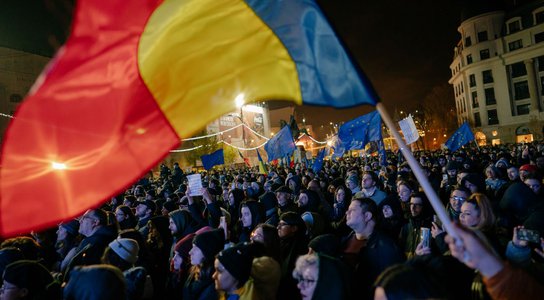“Can Mark Zuckerberg fix Facebook before it breaks democracy?” The New Yorker
“Facebook wins, democracy loses” The New York Times
“Facebook is out of control. If it were a country it would be North Korea” The Guardian
Headlines by opinion writers like these are all over the papers — you’ve probably seen similar ones yourself. Facebook stands accused of breaking democracy, by allowing disinformation, conspiracy theories and divisive content to spread like wildfire on its platform. Added to this, the US is looking into whether Big Tech companies prevent fair competition and should be broken up, the EU is also looking into antitrust practices, and the Trump administration mooted making them liable for content published on their sites, a change that would effectively destroy their business model.
So you can understand that Facebook will have been feeling the pressure not to mess up the 2020 US presidential elections. “This election is not going to be business as usual. We all have a responsibility to protect our democracy,” Mark Zuckerberg said in a Facebook post in September 2020.
So what have they been doing to try to show that they can be trusted not to break democracy?
In September, Facebook announced a number of changes to try to safeguard the US elections, chief among which was a ban on new political ads in the US in the week before the elections. The announcement was widely reported in the press as being an ad ban or blackout. At the time, Facebook said that they’d continue to allow old adverts in order to allow ads to get the vote out and that there wouldn’t be any further changes to this policy. But in a sign of the increasing pressure they came under, in October they announced that after the polls closed, all political ads would be banned until further notice, a ban that is still in place today.
But what effect did the ban on new political ads actually have in the lead up to the election? We decided to have a look – see below for how we did this. And the short answer suggested by our analysis? Hardly any effect at all.
Political ads were shown an estimated 5.3 billion times on Facebook in the US in the week before the election, which is 5% more than the number of times political ads were seen before the new ad ban policy came into place. Five billion ad impressions is enough for every adult in the US to have been shown political adverts 20 times in the week before the election. Similarly, Facebook took an estimated $110 million for showing political ads in the week before the election, which is only 4% less than they did in the week before the new policy came into place.
“Political ads were shown an estimated 5.3 billion times on Facebook in the US in the week before the election, which is 5% more than the number of times they were seen before the new ad ban policy came into place.”
All these millions of dollars that political advertisers spent in the week before the election were not a breach of Facebook’s policies; rather they show how the policy itself which only banned new ads was little more than a token effort.
In a statement to Global Witness, a spokesperson for Facebook said that their policy helped combat misinformation by ensuring that the political ads library was populated in advance of the election, allowing for scrutiny.
Making
hundreds of thousands of political adverts available through an Ad
Library is a reasonable first step. But it’s just that - a first step.
Transparency over ads effectively devolves responsibility to journalists
and civil society to scrutinise problematic ad content. This is
effectively an impossible job - even in the US where the elections have
been closely watched, let alone in other countries.
Moreover, Facebook’s ad library doesn’t allow civil society to see how ads were micro-targeted, preventing anyone from outside the platform from knowing whether an ad was targeted in a polarising or discriminatory way. The only information that is provided is the gender, age and broad geographic breakdown of people who were shown the ad, in contrast to the extremely nuanced criteria that advertisers use to target you.
Misinformation about the US election and voter fraud are spreading like wildfire on Facebook, while the country appears to be becoming more and more polarised. The current system, where a tiny number of people in Silicon Valley proudly hail solutions that don’t make enough of a difference, cannot continue.
This issue is too important to leave to Big Tech to solve through ineffective voluntary initiatives. Governments around the world need to step in and step up to hold these platforms to account.
How did we do this research?
Global Witness’ data investigations and digital threats to democracy teams worked together on this research. To calculate spend on ads during the period of the new policy we used Facebook’s Ad Library Reports archived by the NYU Online Political Ads Transparency Project in collaboration with Harmony Labs.
For calculating the number of impressions, we used data from the Facebook Ad Library API. The API provides current figures for the number of impressions and amount of spend on issue, election and political ads.
We took three snapshots a day of the Ad Library during the time the new ad ban came into effect. We extracted information on ads that were active from 1 October 2020 onwards. This enabled us to measure the change in the number of political ad impressions and spend during the week before the elections.
We wanted to be able to put these figures into context to give people an idea of whether our findings represented a change in political advertising activities compared to the period prior to the new policy coming into effect.
As there can be some lag between Facebook reporting data on adverts in both the API and their own Ad Library Reports (Laura Edelson at the NYU Online Political Ads Transparency Project has written in detail about this), we compared the date ranges 21 October 2020 to 27 October and 28 October to 3 November. This allowed for a 24-hour period after the policy came into effect before we started counting new spend and impressions for ads during the period the new policy was in effect.
Unfortunately, Facebook does not provide precise data on the number of impressions or spend for an ad. Instead, it provides the information as a range. We calculated our figures using the midpoint of the range. In the cases where there was no maximum number for the range, for example for ads that had more than one million impressions, we took the lowest value of the range.
The data available from the Facebook Ad Library API currently only relates to ads on issues, elections and politics, but there are some commercial ads in the database that appear to have been misclassified, and so our figures necessarily include a relatively small number of non-political ads.
Preview image credit: SOPA Images / LightRocket via Getty Images


